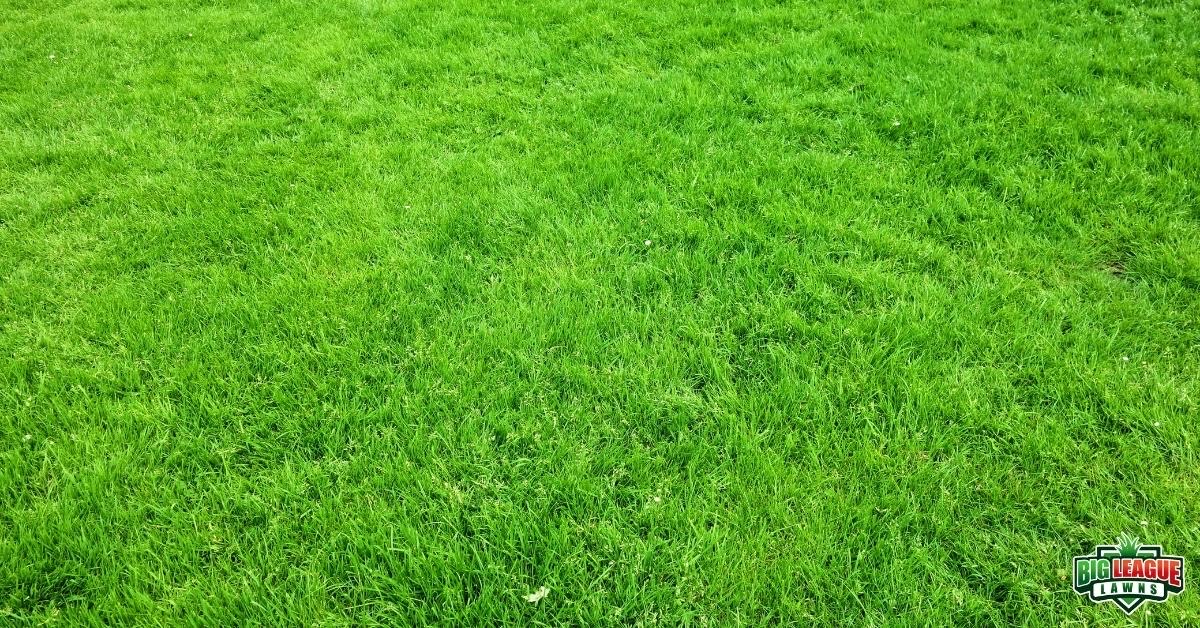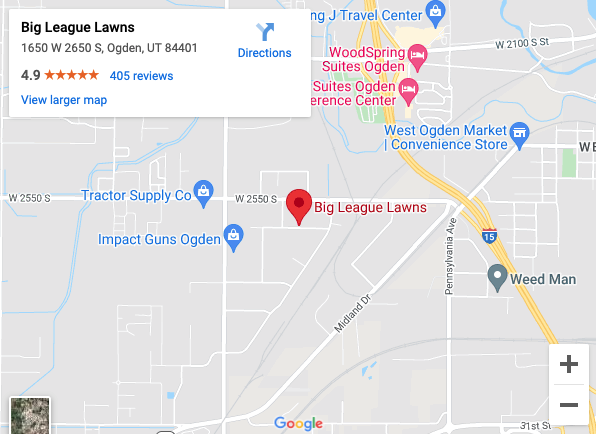
Naturally, as turf grass ages on lawns, it can begin to look less vividly green and robust. When that phase occurs, even diligent fertilizing and watering don’t revitalize the dulling grass. Ultimately, areas of the lawn will die off or turn brownish. In many cases, the grass just begins thinning throughout the lawn, and weeds start emerging and multiplying. Some lawns may look beautiful during the cooler months of the spring and fall seasons but look weak and distressed in the summer heat. Overseeding as part of a proper lawn winterization process can often correct either of these kinds of lawn issues.
Lawn Overseeding
What is overseeding?
Overseeding is reseeding over existing grass. It helps revitalize a lawn to bring back beautiful, healthy, thick, green grass. Overseeding and aeration penetrate the surface of the soil so it can be cultivated with new seeds, nutrients, water, and oxygen.
The Overseeding Process
How can I tell how to overseed a lawn correctly?
The process can also be used to incorporate different varieties of grass that can flourish along with the existing varieties already in your yard. Reseeding is only an appropriate approach if more than 50% of the grass on your lawn is still alive. If there is less than that, it is recommended that you replant your lawn for a better outcome.
Benefits of Overseeding
Is overseeding worth it?
With proper reseeding, aeration, fertilization, and other treatments as necessary, you can have much healthier, stronger, and denser grass with deeper roots. That all means reduced risk of diseases and fewer weed problems and a thriving lawn next spring.
Best Times of Year for Overseeding
During the winter freeze is obviously not a good time for seeding grass, and the mid-summer heat is not conducive to thriving grass either. The best seasons for reseeding grass are:
| Autumn: | Fall in Utah (August and September) is the best time of the year for overseeding. The soil is still warm, though the air is getting colder. You’ll need to apply the seed at a point early enough in the season for it to germinate and start growing before a fatal frost arrives to kill your newly developing grass. |
| Spring: | In cases of early winter frost, then the next best option is lawn overseeding in spring (April and May). Even though the soil is still somewhat cold at this time of year, it is a preferable time for reseeding than in summer, when the high heat can make it much harder for new grass to thrive. |
Before Overseeding
Can you just sprinkle grass seed on the lawn?
Overseeding involves more than merely starting to distribute seed across an existing lawn. Here are some essential preparatory processes that are completed prior to reseeding. You may not need to do all of these, but you will need to do some of these tasks:
- Soil test: Testing can help identify additions the soil may require for neutral pH.
- Mow: You should mow your lawn, possibly to a lower height than usual. Remove the grass clippings to make it easier for the new seeds to fall to the soil surface evenly.
- Dethatch: Perform dethatching as needed throughout the lawn in areas with dense thatch.
- Aerate: Lawn aeration loosens soil compaction to help ensure the new seeds penetrate the soil surface so they can be properly nourished, hydrated, and protected for optimal growth.
- Add a soil amendment: Up to a 1/4 inch may need to be added. (But to protect the grass, do not use more than that).
- Fertilize: Lawn fertilization should be done after the overseeding is completed to help increase the germination rate.
- Water: Keep the soil moist for the first 1 to 2 weeks after overseeding or until the new grass has reached 2 inches in height. Return to a regular lawn watering schedule after the seeds are established.
Following these basics for overseeding can revitalize an old fading lawn and generate a thriving lush green lawn throughout the warm seasons.
Big League Fall Aeration and Overseeding Services
Utah soil is generally a lot of clay and hard, dry desert ground. Compaction is a problem for most Utah lawn owners. So, for grass to survive the winter and flourish in the arid Utah climate requires effective lawn care. Aeration twice per year is recommended — once in the springtime and again in the fall.
In addition to overseeding to replenish viable seeds, we recommend aeration services for your UT lawn, if necessary due to soil compaction. Insufficient turf seed throughout a lawn promotes aggressive weed growth next spring. So, you should both aerate and overseed the lawn during the fall to build up the amount of grass seed needed for robust growth in the spring.
Big League Lawn Overseeding Service
How often should you overseed your lawn?
Our lawn rehab experts will evaluate your lawn and advise you on its periodic treatment needs for the best results. We can correct serious grass health issues! We apply Big League remedial lawn solutions to restore ailing grass.


